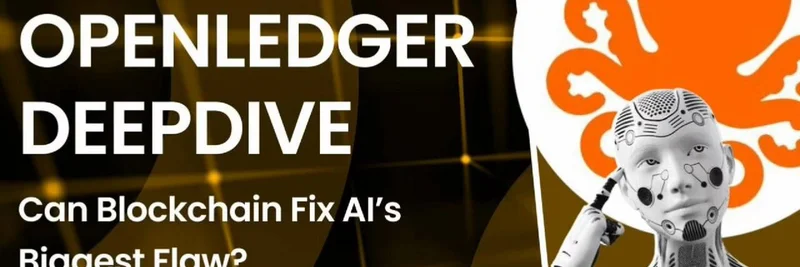OpenLedger: Can Blockchain Solve AI's Biggest Flaws?
In the rapidly evolving world of artificial intelligence (AI), transparency and data ownership have emerged as critical issues. Enter OpenLedger, a project that promises to leverage blockchain technology to address these challenges. A recent deep dive by BSCN explores whether OpenLedger can indeed fix AI's biggest flaws.
The Problem with AI
AI systems are often criticized for their lack of transparency. Traditional AI models are typically centralized, making it difficult to trace the origins of the data used to train them or to ensure fair compensation for data contributors. This opacity can lead to issues of bias, privacy concerns, and a lack of accountability.
OpenLedger's Solution
OpenLedger positions itself as the "AI Blockchain," aiming to decentralize the entire AI data lifecycle. Here's how it plans to tackle the problems:
On-Chain Data Provenance
One of OpenLedger's key features is on-chain data provenance. This means that every piece of data used in AI training is recorded on the blockchain, making it publicly verifiable and traceable. This transparency ensures that users can see exactly where the data came from and how it was used.
Decentralized Ownership
OpenLedger introduces a decentralized ownership model for data. Contributors can create and own datasets, known as Datanets, which are stored on the blockchain. This system allows for fair attribution and compensation for data providers, addressing the issue of data aggregation without reward in traditional AI systems.
Reward Mechanisms
The platform implements reward mechanisms to incentivize contributions. Whether it's data, compute power, or algorithmic tuning, all participants are acknowledged and compensated through the blockchain. This creates a more equitable ecosystem where everyone benefits from their contributions.
How OpenLedger Works
OpenLedger's infrastructure is designed to support the training and deployment of specialized AI models using community-owned datasets. All actions, from dataset uploads to model training and governance participation, are executed on-chain. This ensures that the entire process is transparent and immutable.
DataNets and Model Deployment
DataNets are essentially playlists of data for AI training, similar to how music playlists work. Each DataNet is on-chain, publicly verifiable, and owned by contributors. OpenLedger's OpenLoRA tool allows for efficient model deployment, even on limited hardware, making it accessible for a broader range of users.
Token Economics
The Open token ($OPEN) powers all activities on the platform. It is used for paying for compute resources, rewarding data contributions, and participating in governance. With a total supply of 1 billion tokens, OpenLedger aims to create a sustainable economic model for its ecosystem.
Community and Development
OpenLedger has already seen significant community engagement. The project has conducted over 20 million transactions on its testnet since the start of 2025, showcasing robust development and global participation. Initiatives like the Testnet Points Reward Contest have further galvanized the community, encouraging content creation and partnership formation across regions like Brussels and Asia.
What's Next for OpenLedger?
As OpenLedger gears up for its mainnet launch, the focus is on building a fully transparent AI economy. The platform's AI Studio and comprehensive infrastructure aim to make AI development more accessible and accountable. Once live, OpenLedger promises to be a blockchain where AI isn't just an application but a foundational element of a more transparent and fair digital future.
Conclusion
OpenLedger's approach to combining AI and blockchain technology offers a promising solution to some of AI's most pressing issues. By decentralizing data ownership, ensuring transparency, and incentivizing contributions, OpenLedger could indeed be a game-changer in the AI landscape. As the project progresses, it will be interesting to see how it fulfills its potential and impacts the broader tech ecosystem.
For more insights into meme tokens and blockchain technology, visit Meme Insider. Stay tuned for the latest updates and deep dives into the world of crypto and AI.



